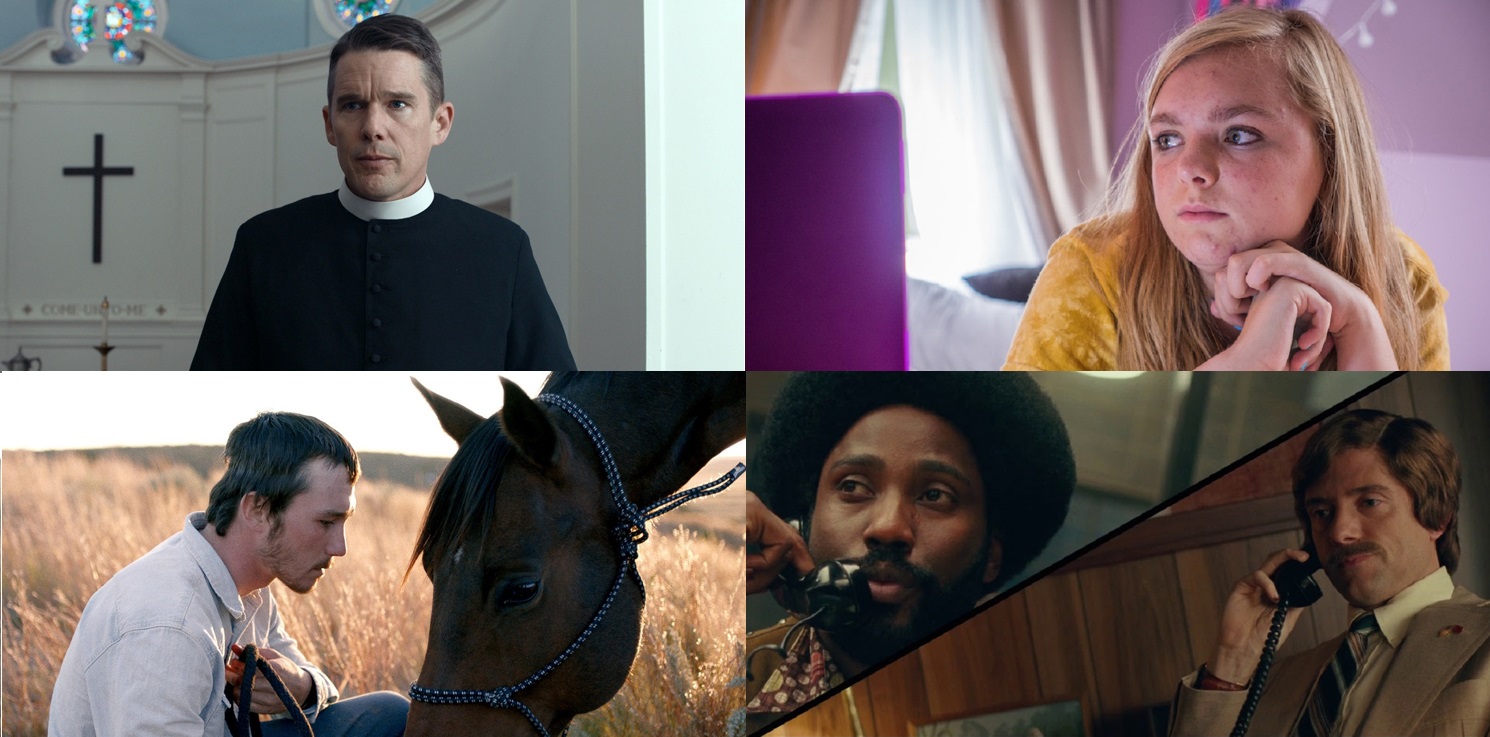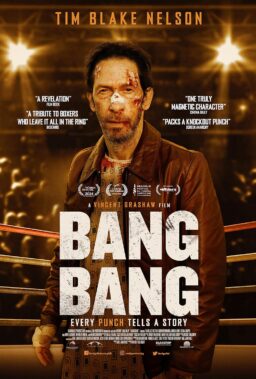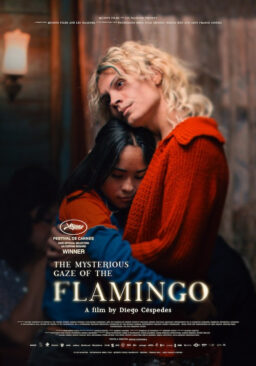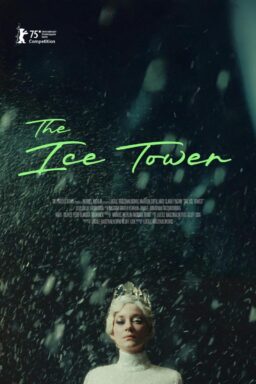10. “The Other Side of the Wind“
When Orson Welles was a teenager, he traveled to Ireland by himself, and finagled an audition at The Gate theatre, run by a fascinating guy named Micheál MacLiammóir (eventually a lifelong friend of Welles; he played Iago in Welles’ “Othello.”) As improbable as it sounds, Welles was cast, despite having no real experience, and, as he told it (grain of salt required), became the Toast of Dublin. MacLiammóir remembered Welles’ initial audition in one of his memoirs: “It was an astonishing performance, wrong from beginning to end but with all the qualities of fine acting tearing their way through a chaos of inexperience…A preposterous energy pulsated through everything he did. One wanted to bellow with laughter, yet the laughter died on one’s lips. One wanted to say, ‘Now, now, really, you know,’ but something stopped the words from coming. And that was because he was real to himself, because it was something more to him than a show, more than the mere inflated exhibitionism one might have suspected from his previous talk, something much more.”
This is one of the best descriptions of Welles as an artist. He was “real to himself,” he brought “preposterous energy” to everything, whether “Citizen Kane,” “Touch of Evil” or “Chimes at Midnight.” Welles had obsessed on “The Other Side of the Wind” for years as he struggled to find financing, starting filming and then stopping when money ran out. The existing footage, reels of it, was held under lock and key by the Iranian government for years (only Orson Welles…), until finally it was rescued posthumously by a dedicated group of people, determined to bring Welles’ vision to fruition. It took 40 years.
Using Welles’ shooting script and notes, an impressive team pieced together “The Other Side of the Wind,” trying to follow Welles’ plan. The finished film is grandiose and outrageous. John Huston plays a famous director, followed around by paparazzi, his ego tended to by an acolyte (Peter Bogdanovich). Huston’s fictional director is struggling to finish his latest film, one called The Other Side of the Wind. Welles’ film is seen entirely through the “documentary” footage of the phalanx of photographers following Huston around, a style eerily prescient of the future of reality-TV and found footage films. Then there’s the film-within-a-film, an Antonioni-inspired mood-piece featuring two beautiful people wandering through a deserted landscape. Whatever your feelings on Welles’ excesses and fabulism, or the “inflated exhibitionism” referenced by MacLiammóir, he still—and always—brought “something much more” to the table, and against all odds. The results are exhilarating.

9. “Eighth Grade“
Bo Burnham’s extraordinary directorial debut features an awkward girl (Elsie Fisher) trying to navigate middle school, in a frantic state of unrequited love, making YouTube videos no one watches, rolling her eyes at her father (Josh Hamilton), trying to will herself into self-empowerment and confidence. It’s an excruciating and humorous look at the world of teenagers now, “performing” their perfect selves on Instagram, but it’s also timeless. Middle school is middle school, no matter the generation; it’s the worst stage and it lasts forever.
Burnham’s style immerses us in her point of view. He sees what she sees. He feels what she feels. He translates that to us. Some of the scenes are cringe-worthy, but you cringe because of recognition: we’ve all been there. There is a world of difference between a 13-year-old and a 16-year-old, and “Eighth Grade” gets that on such a cellular level that watching it was like an extended terrible flashback. Burnham’s work here is an act of empathetic imagination.
8. “A Star is Born”
A reminder: This is not a remake of the 1976 film starring Barbra Streisand and Kris Kristofferson. This is not the second version. There have been, now, five versions, starting with 1932’s “What Price Hollywood?”, and including the 1954 classic, starring Judy Garland and James Mason. For not so mysterious reasons, the story of a successful male star eventually eclipsed in fame by his wife, is timeless. Every generation deals with gender issues. Many relationships, particularly among creative people, uneasily balance support and competition. I love that three-time Oscar nominee Bradley Cooper, serious Method actor, chose this “old-fashioned” story for his directorial debut. It’s showbiz on steroids. Cooper plays Jack, an Eric Church-type country-rock star, still filling stadiums despite accelerating alcoholism. One night, he finds himself in a drag bar by accident, and he’s blown away by the performance of Ally (Lady Gaga), slinking through the audience singing “La Vie en Rose” in a huge confident voice. Love follows. Ally rises in the pop world as Jack descends.
Cooper’s concert sequences give a sense of the huge audience, while never sacrificing the intimacy between the two of them. It feels like you’re actually there in that stadium. Look for the sudden spark in Cooper’s eyes when Lady Gaga sings in a deserted parking lot the first night they meet. The spark in his eyes is not that of a user or a predator (although I’ve heard that criticism). He doesn’t look at her and see dollar signs. He looks at her and sees a miracle of talent. To quote a friend of mine, “Game recognize game.” Falling in love with someone’s talent is a drug. He sees her in a way she does not yet see herself. Such love stories are sometimes called “old-fashioned.” Thank goodness Bradley Cooper doesn’t feel the same way.
7. “Mandy“
Like a Black Sabbath song come to life, “Mandy” is so audacious the audience around me in the theatre kept bursting into laughter, a spontaneous expression of surprise and satisfaction, almost like, “Wait … is that even allowed?” Director Panos Cosmatos tosses us into a frankly hallucinatory world, with devil-demon creatures (people?) on motorbikes, shimmering prismatic fantasies, the creepiest church you’ve ever seen in your life, and enough gore to fill 10 meat lockers. Red (Nicolas Cage), a lumberjack and his girlfriend Mandy (Andrea Riseborough) live in a cabin in the woods, an oasis where they dream their dreams and enjoy the quiet. But something unforeseen arrives, something unimaginable, and their safety is shattered. After that, all bets are off.
There are nods to every slasher movie you’ve ever seen, plus every acid trip you’ve ever been on, but it’s Cosmatos’ vision—intensified by the showstopper of a score by Icelandic composer Jóhann Jóhannsson (who, sadly, passed away earlier this year)—that makes this is one of the boldest films of the year, like nothing else around. Yet somehow, it’s never less than totally personal. “Mandy” is devastating and delirious.

6. “The Rider“
Chloé Zhao’s “The Rider,” the story of a group of modern-day Lakota cowboys, living on the Pine Ridge Reservation in South Dakota, is a sensitive and almost gentle film, holding within it emotion so intense my heart practically exploded. Influenced by Terrence Malick, Zhao has a keen eye for landscape, for clouds and light, the way the gold sunset falls on the velvety heaving sides of the horses, towering thunderclouds, frost on the grass. All of the actors play versions of themselves, living the lives they actually live offscreen, giving the film a rare verisimilitude.
Brady Jandreau is a former rodeo star, sidelined by injury; he’s also a genius horse-whisperer (the film features not one, but two, not-to-be-missed sequences where Brady trains a wild horse). Living with his father and autistic sister (both played by themselves), his life is hard but horses focus him, give his days meaning. He is one of a dying breed, a cowboy, but Zhao—who grew up in Beijing—enters this world easily, lovingly, approaches it without judgment. “The Rider” mixes documentary with fiction, and Jandreau—at the center—is a compelling and sensitive presence, unselfconscious in front of the camera, letting us into his emotions, his world. I can’t stop thinking about this film.
5. “Shoplifters“
Living off-the-grid, a makeshift family squats in a crowded basement apartment, hiding from the landlord, surviving through petty theft, sex work, shoplifting, whatever. The rhythms of Hirokazu Kore-eda’s Palme d’Or-winning “Shoplifters,” may seem random and mysterious at first, filled with gaps, but it has its own internal logic, it pulls you into its flow. The reality onscreen has existed long before the film actually begins.
Many reviews contain plot spoilers, but I went into “Shoplifters” cold, and I’m glad I did. Doing so forced me into full immersion. I had no idea where it was going, but Kore-eda, a master, knows where he is going, knows how to build without tipping his hand. When more information finally comes about the family’s history, when we are given a glimpse of all we haven’t been told, the bottom drops out, an abyss revealed. The final sequences are powerful in almost a shocking way, since the film has lulled the audience into the characters’ everyday routines. The performances, from Lily Franky and Matsuoka Mayu in particular, are so grounded and unfussy, it’s like getting the wind knocked out of you when you see where they eventually go. “Shoplifters” is a sneaky powerhouse.
4. “Shirkers“
The moment I heard the voice of Georges Cardona, coming out of a cassette tape sent to his teenage film student (Sandi Tan, director of “Shirkers”), I felt a chill: something was very, very wrong with this man. The search to discover how wrong Cardona really was is the engine driving “Shirkers,” although it’s also a portrait of a childhood in a long-lost Singapore, and how Tan teamed up with two movie-mad best friends to make a feature film, a film Tan wrote called Shirkers. The kids had no idea that they were attempting the impossible, that they weren’t supposed to be so confident, so audacious, so bold. They wanted to make a movie and so, by God, they went out and made it. Cardona, a man of mysterious origins and even more mysterious motivations, was a mentor to Tan, invested in helping the talented teenager realize her dream. But then it all went … weird.
“Shirkers” is about the absence at the center of Tan’s life, her friends’ lives, lost innocence, all caught up in some weird spell they didn’t understand at the time, and still struggle to understand. “Shirkers” is as much detective work as it is anything else, and what is uncovered is as chilling as Cardona’s flat-affect voice on that old cassette tape. “Shirkers” is not to be missed.

3. “BlacKkKlansman“
The faces float through a dark space, eyes tilted upward, with intent open expressions. Framed like singular portraits, backed in black velvet, the sequence highlights the beauty of the faces, the emotional reality of the moment, how present everyone is, the collective energy in that small dark room. This sequence in “BlacKkKlansman” is one of the most visually beautiful—and visually exciting—sequences in Spike Lee’s career, and it works in multiple intersecting ways. It grounds “BlacKkKlansman” in the reality of the individual, pulling each person out of the crowd. Yet sometimes there are two, three, faces floating in the dark space. They are bonded in one common experience and goal.
The sequence launches the film into a poetic space, resonant and filled with echoes. Ron Stallworth (John David Washington) and Flip Zimmerman (Adam Driver) are undercover cops, one African-American, one Jewish, who come up with a plan to bring down the local Ku Klux Klan chapter. Based on a true story, some of the events are so absurd they could only be true, and both actors create a believable sense of camaraderie and seriousness. Lee is in high political gear, connecting yesterday to today, interspersing the action with scenes of almost slapstick humor. Gleaming with rage, it’s one of Lee’s best films, and that’s saying something.
2. “Roma”
Alfonso Cuarón’s “Roma” takes place in the Mexico City neighborhood where he grew up in the 1970s. Filmed in vivid black-and-white, featuring long takes, the camera moving horizontally across fields, into the sea, down city streets, featuring sometimes hundreds of extras, “Roma” shows the life of Cleo (Yalitza Aparicio), a Mixtec woman working for an upper-class family. “Roma” goes much deeper than a tribute to the woman who raised him. Surrounding her is a world of political upheaval, land grabs, enormous student protests, as well as the personal strife within the family she works for.
In another film, these events would be central. In “Roma,” they are the background noise, with Cleo strolling past, through, around. Life here—and its relationships—is not simple, it’s pierced with issues of class, privilege, politics. Among other things, “Roma” is an overwhelming resurrection of a time and place, a whole era, the swarms of extras living out complicated vignettes going on behind the action, seen briefly, gone in a flash. The city bristles with life. Cuarón’s film is a determined act of memory and a work of powerful tribute.

1. “First Reformed“
In Paul Schrader’s 1972 book Transcendental Style in Film, a study of the films of Yasujirō Ozu, Robert Bresson and Carl Theodor Dreyer, he described the three “stages” of what he called “transcendental film”: “the everyday,” “disparity,” and “stasis”. The “everyday” shows the world as an emotionless factual place. “Disparity” brings in “an overpowering, irrational and undefined sense of commitment (a ‘passion’), into the cold ordered everyday.” Disparity “culminates in a decisive action”, which is “the crucial moment” where the film’s “dual nature is revealed.” As Schrader puts it, “the Holy can find expression in a factual world.” The final stage, “stasis,” returns the film to the “everyday,” but with an important change: “one understands that the transcendent is beneath every realistic surface.”
The “transcendental style” was hugely influential in Schrader’s work as writer and director, elements of it can be seen in “Taxi Driver,” “American Gigolo,” “Light Sleeper,” “Auto Focus.” But here, in “First Reformed,” a deeply unnerving film, starring Ethan Hawke as a priest looking for meaning in a meaningless world, “transcendence” takes center stage, from the first stunner of a shot, the camera moving slowly towards a white church with a towering steeple. “First Reformed” feels like the culmination of decades of contemplation and obsession. Like Schrader’s other films, “First Reformed” features a man so isolated he almost shivers apart when in contact with other people. What happens when he connects with a young pregnant parishioner (Amanda Seyfried) is explosive, hallucinatory, too intense to survive in the “everyday.” The crisis of faith that follows threatens to shatter his life, as well as the fabric of reality.












